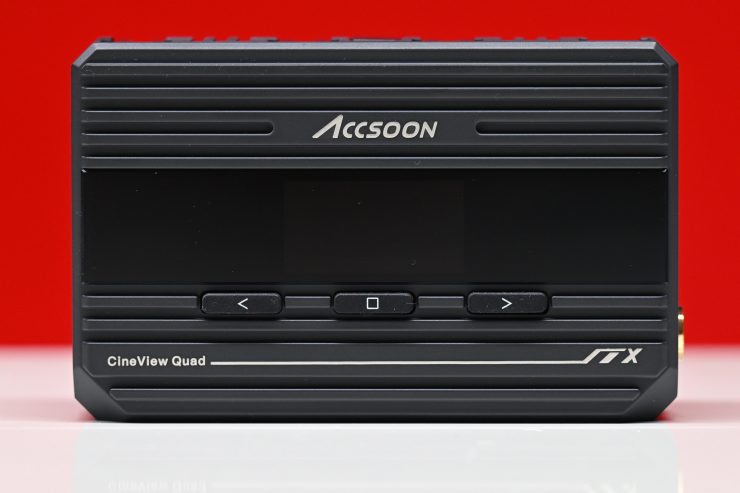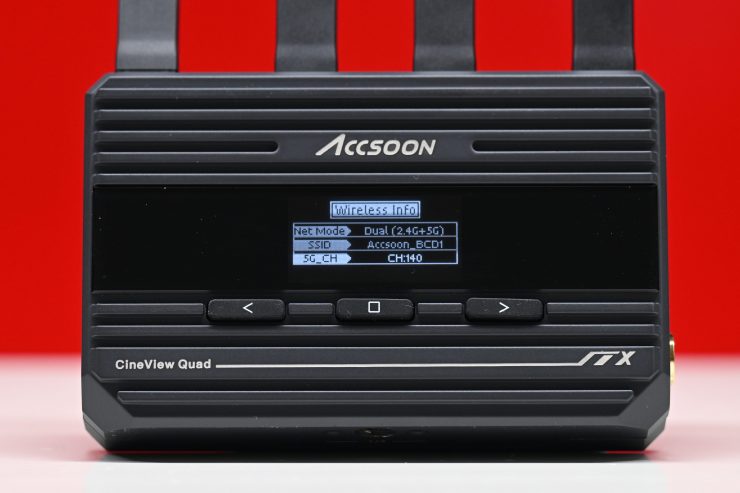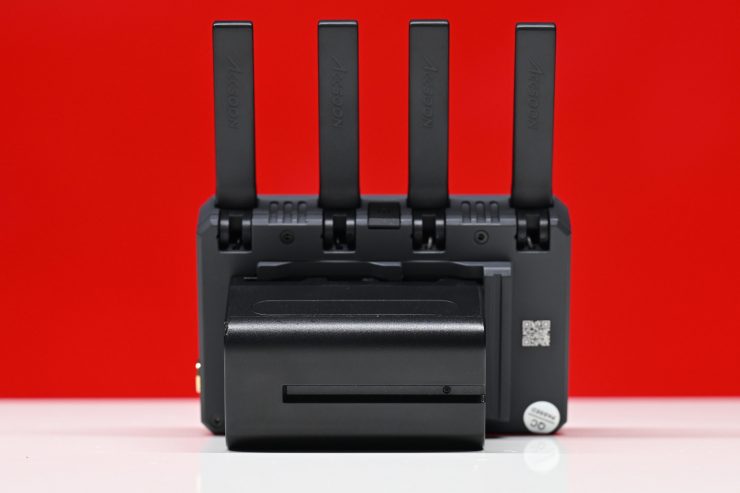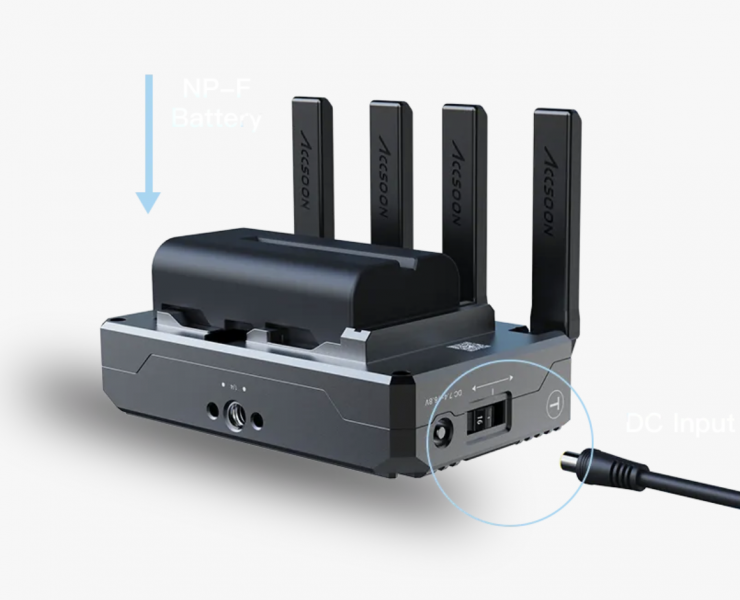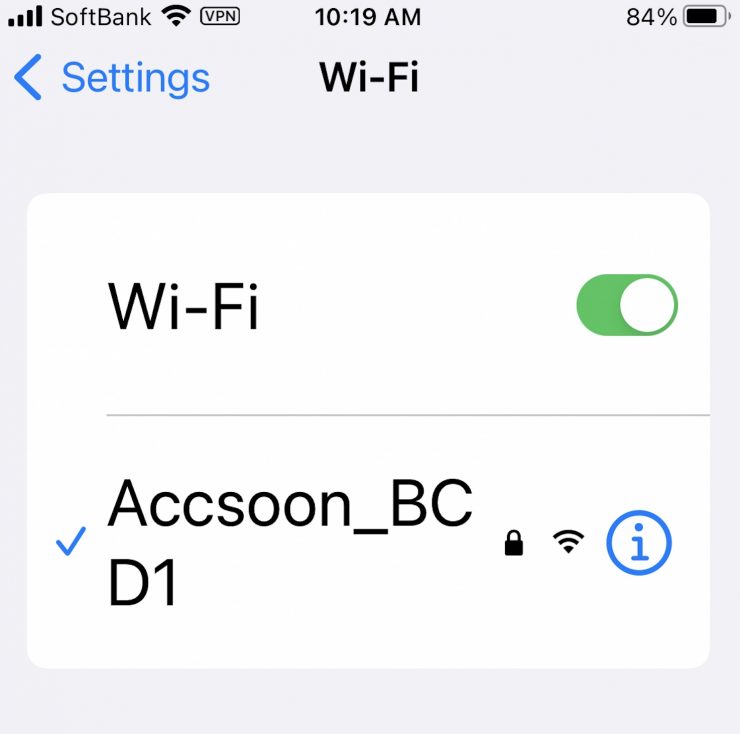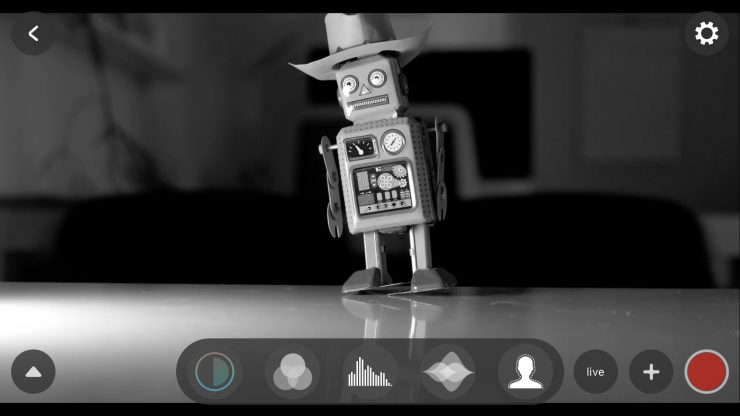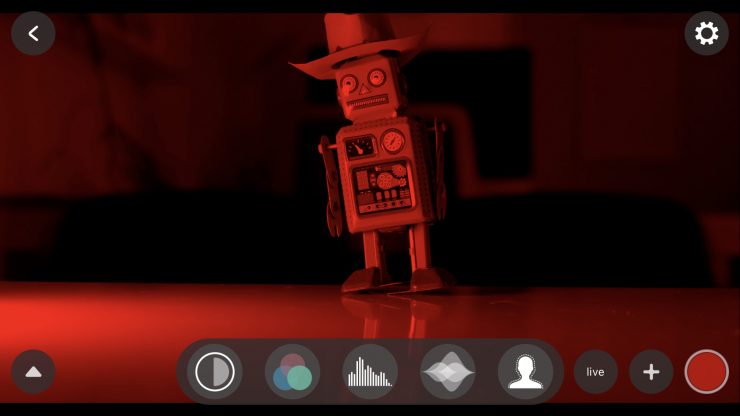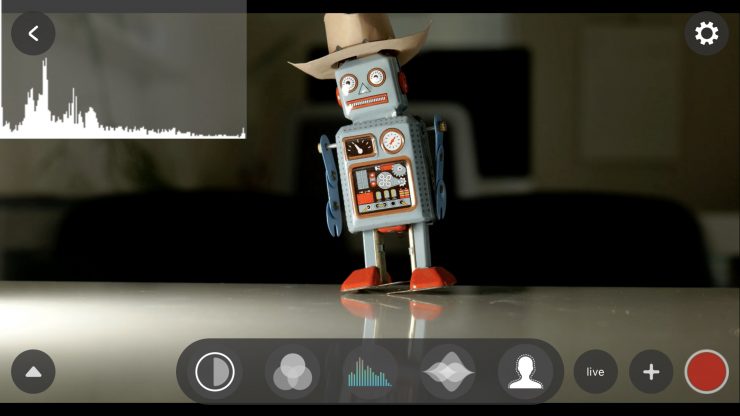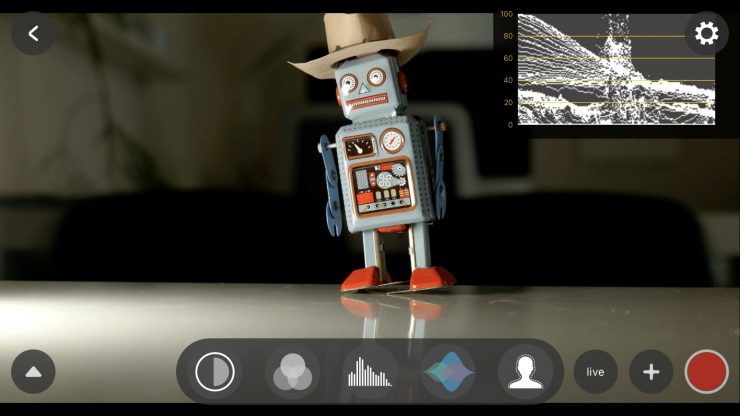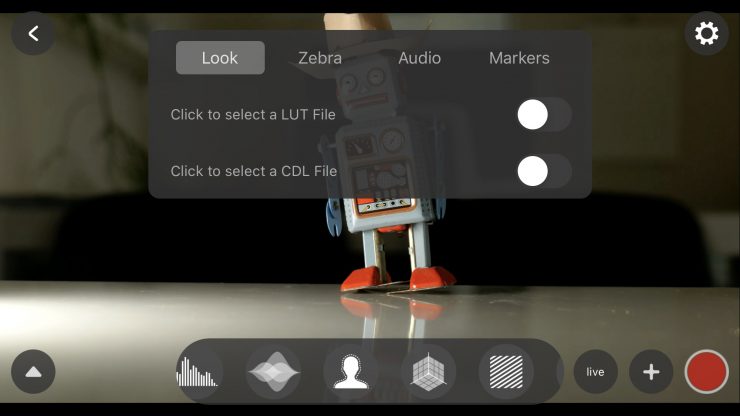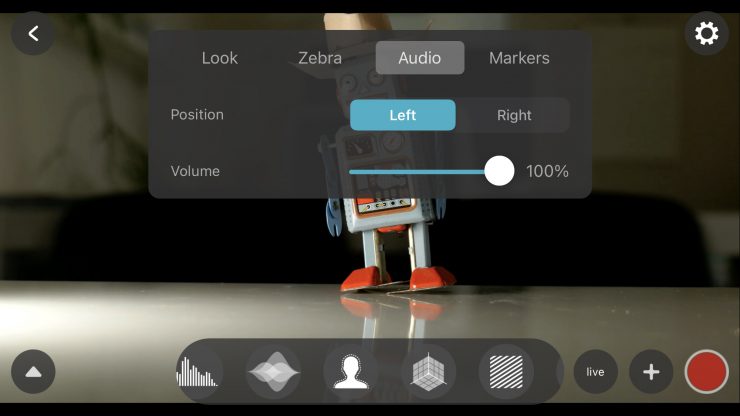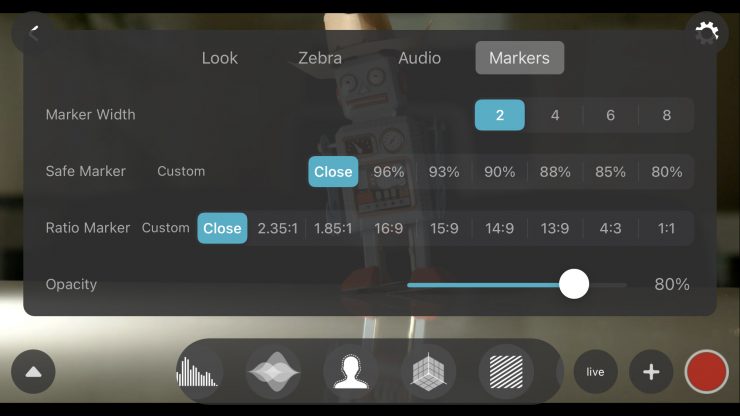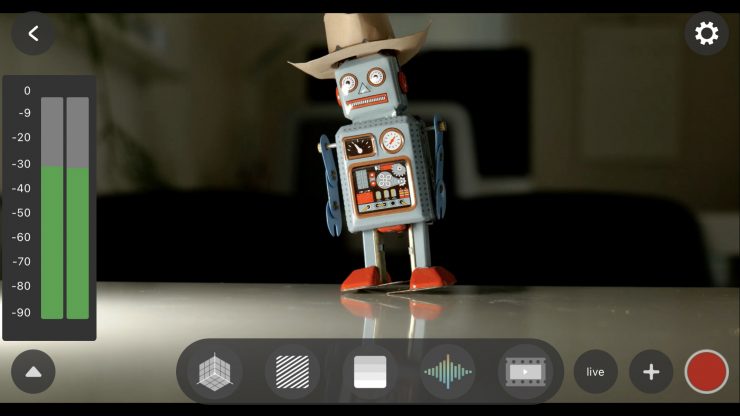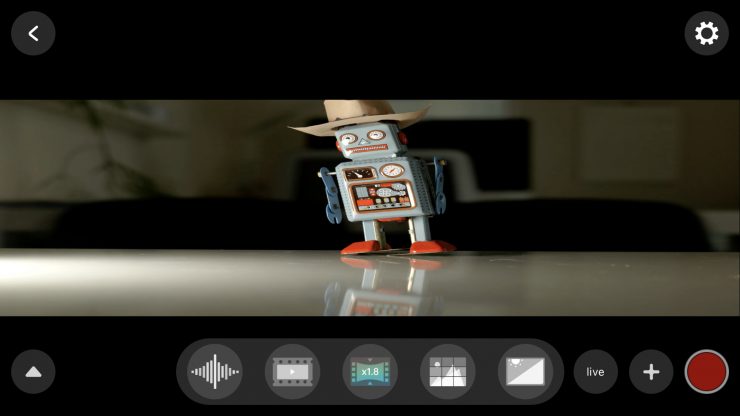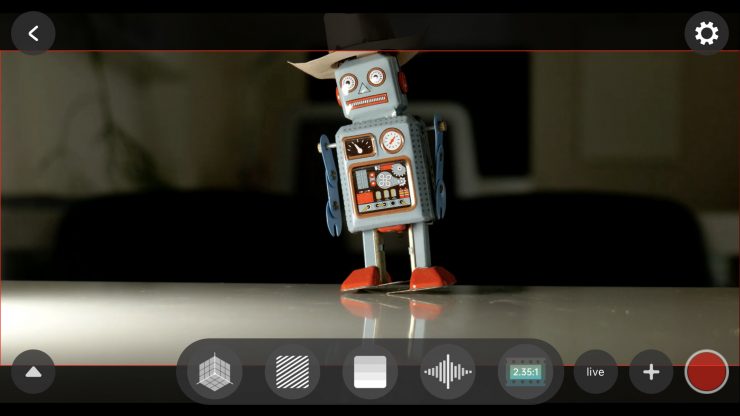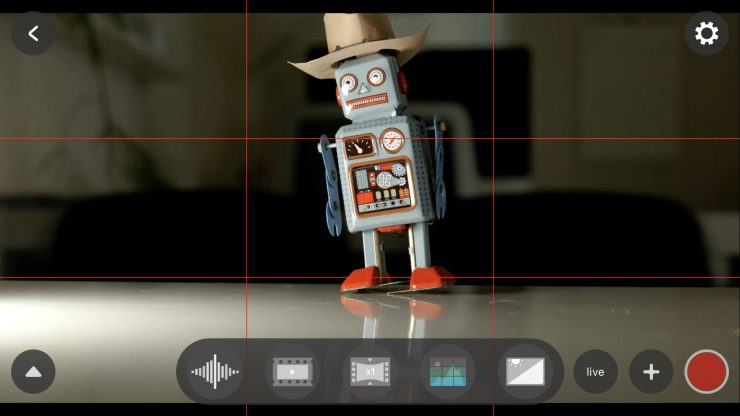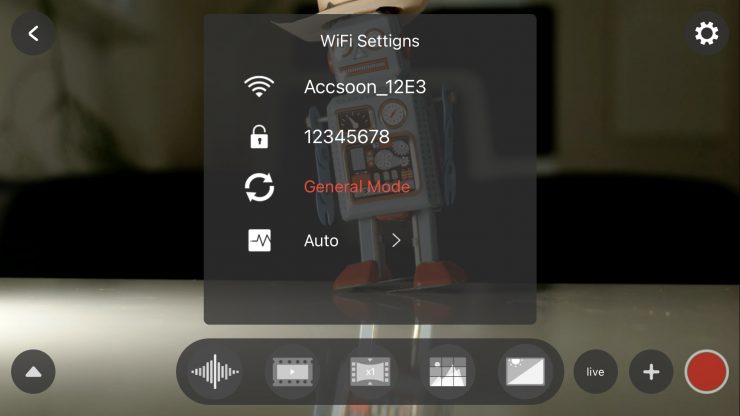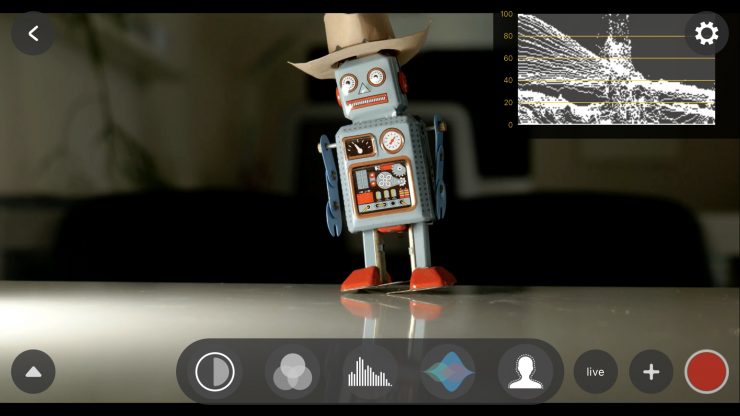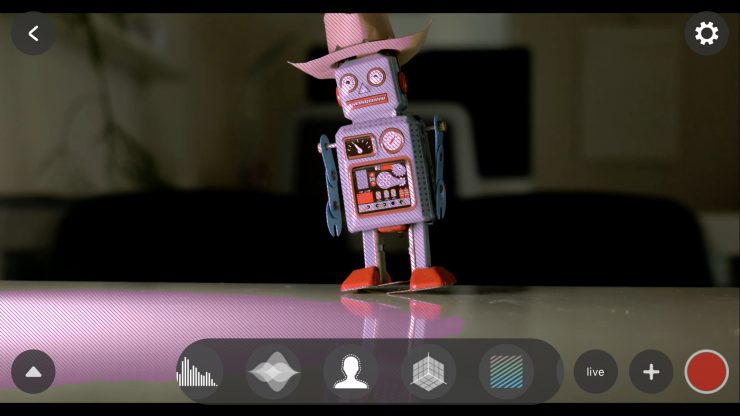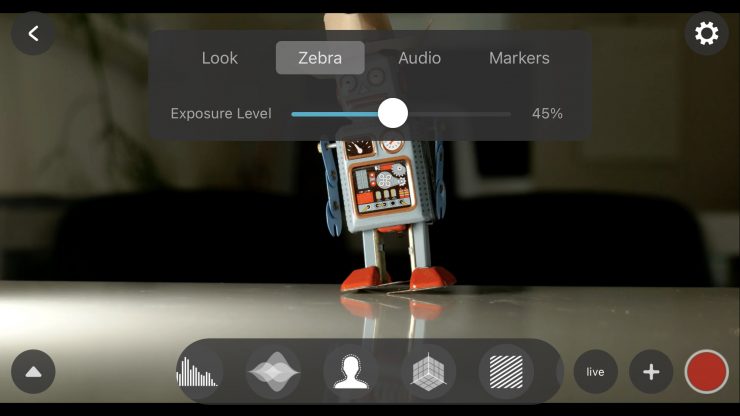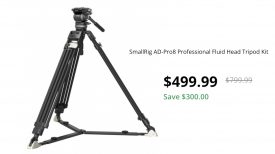
The CineView Quad is a new addition to the Accsoon wireless video transmission line-up. The CineView Quad is different from some of the other budget Accsoon offerings as it features Dual Band wireless capabilities. It also has both SDI and HDMI inputs and outputs.
Accsoon has been very busy over the last few years and they have bought a multitude of products to market. I have reviewed quite a few of their products and you can see my reviews below.
From small beginnings
The original CineEye was a big hit with budget filmmakers as it allowed you to stream an HDMI signal directly to smartphones and tablets through Wi-fi. At $199 USD it was arguably the first budget-friendly way of viewing wireless video on multiple devices. Above you can see our video report from NAB 2019.
Accsoon has certainly released a lot of products in a relatively short period of time.
So let’s check out the CineView Quad.
Key features
- 2.4GHz + 5GHz Dual Band Transmission
- Latency less than 60ms (camera latency not included)
- 500 ft/150m Transmission Range
- SDI & HDMI
- Small size for easy mounting
- Monitoring on Up to 4 iOS or Android devices
- Full HD video and High-Quality audio transmission
- NP-F type battery
- DC input
- Free Accsoon Go monitoring and live streaming app
- Automatic Channel Selection
- Noise-free fanless design
- Aerospace Grade aluminum alloy construction
- 1.3 inch OLED Display
- Easy Firmware update
- Quick and Easy Set-Up
Size & Design
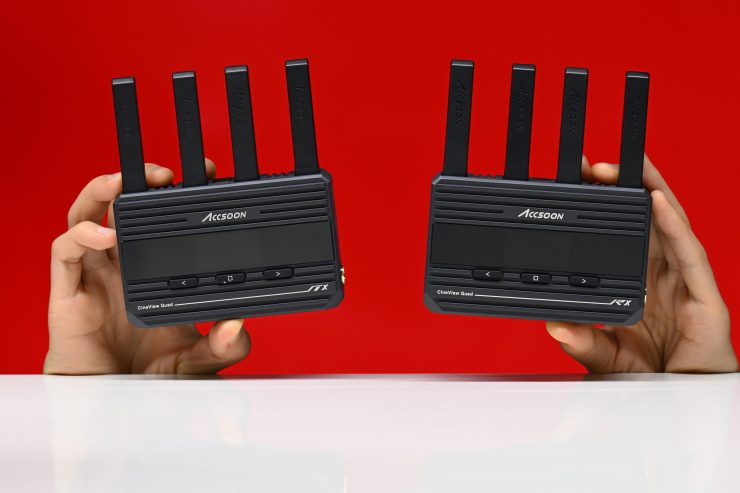
The CineView Quad is reasonably large and it more closely resembles a traditional wireless video transmission system, than a Wi-fi based system.
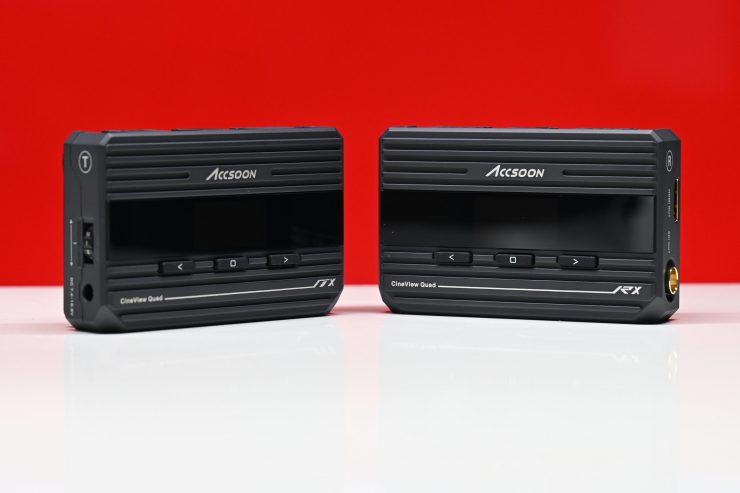
The CineView Quad consists of both a transmitter and a receiver. This way you can use the system to either transmit to iOS or Android devices or/and to the receiver unit.
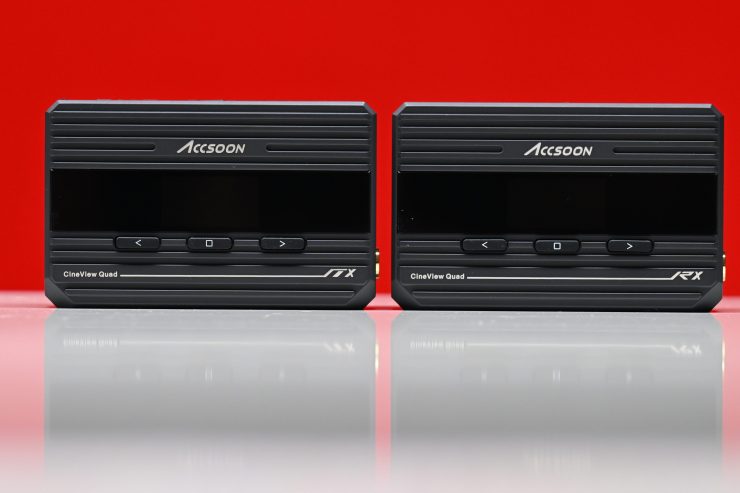
The transmitter and receiver both weigh 17.3 oz / 490 g. They also have the exact same physical dimensions of 4.9 x 3 x 1.2″ / 12.5 x 7.7 x 3.1 cm.
The design of the system is clean and modern and in line with their recent offerings.
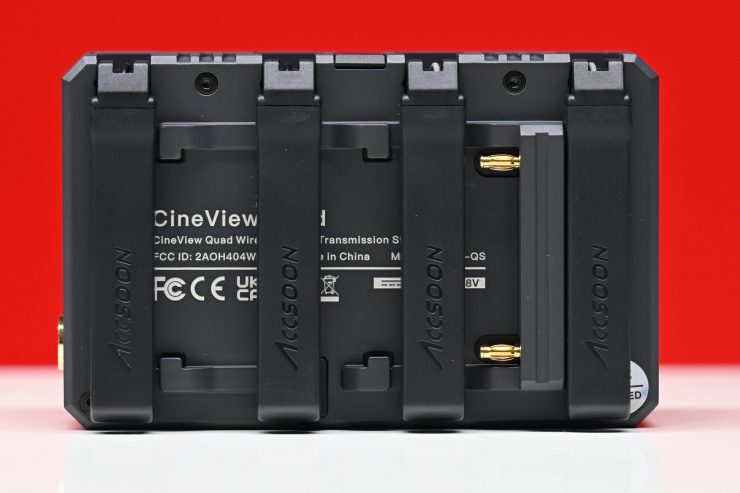
The antennas fold down which is a nice feature when you are storing or transporting the system.
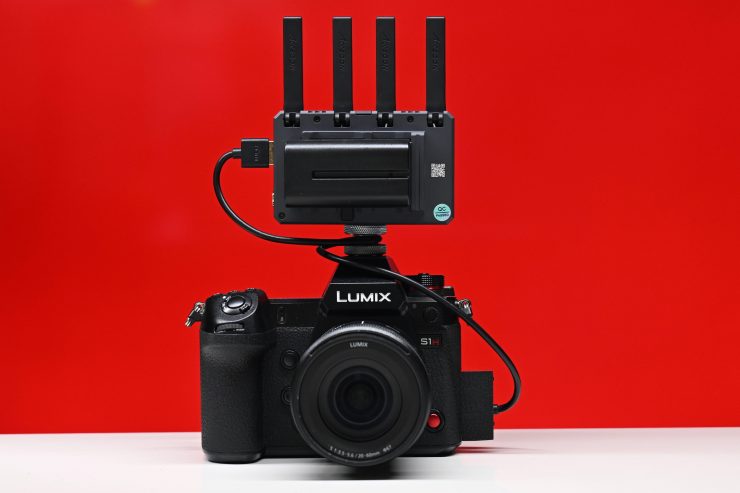
I personally think that the CineView Quad is too big if you plan on using it on a DSLR or mirrorless camera. Even on a small to mid-sized digital cinema camera, it will still occupy quite a lot of real estate.
This really is a product that is better suited for use on larger-sized cameras.
Concept
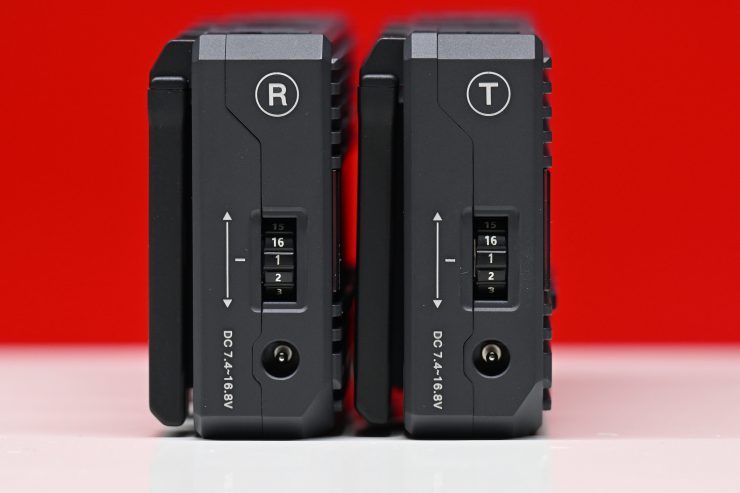
The CineView Quad, just like the CineEyes 2S Pro has placed Accsoon into a new segment of the market. Affordable SDI and/or HDMI wireless video systems have been popping up everywhere lately and it comes as no surprise that Accsoon wants a piece of that pie.
Unlike quite a few of their previous products that were aimed primarily at the Prosumer, YouTube, Vlogger market, the CineView Quad is trying to attract a different kind of user.
The concept behind the CineView Quad, just like the CineEye 2S Pro is to give professional users a versatile, reliable, SDI and HDMI wireless video system that won’t break the bank.
Build Quality
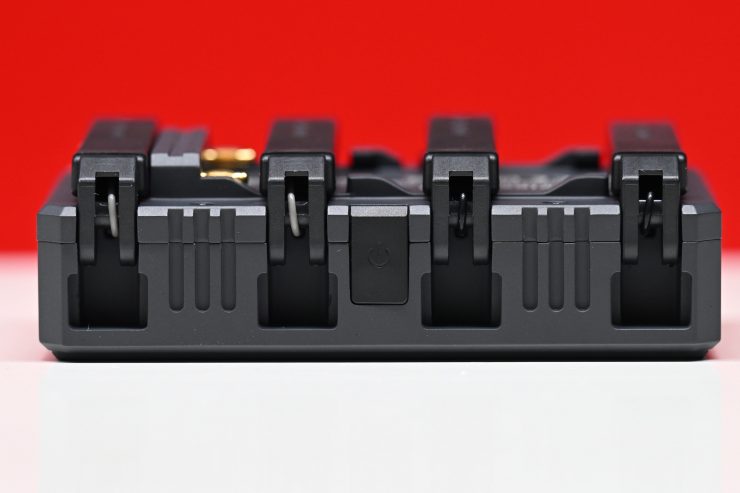
The CineView Quad is robustly made and the overall build quality is better than most competing products in this price range.
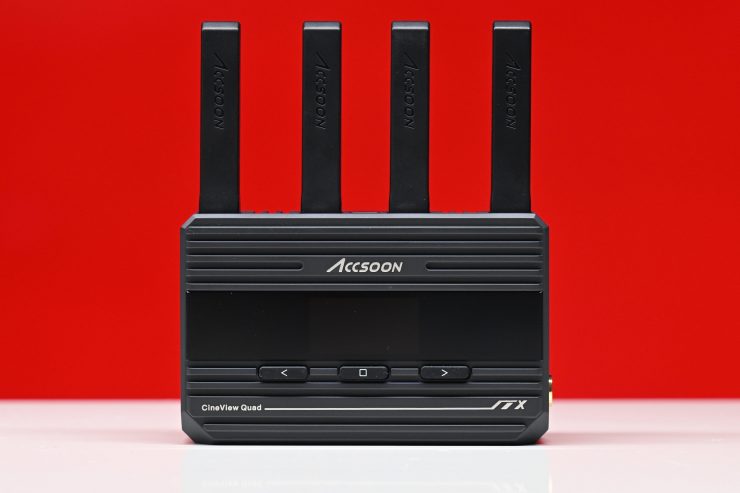
Both the transmitter and receiver are encased in a rugged lightweight aerospace-grade aluminum alloy. The buttons and dials feel reasonably solid and there is nothing that I can see that concerns me.
What I did find is that both the TX and RX units do quite hot, especially once they have been on for a while and this is mainly due to the fact that the system is fanless.
The antennas do feel like the weakest link and I would prefer removable antennas because I think they are more robust and less likely to break over time.
What do you get?
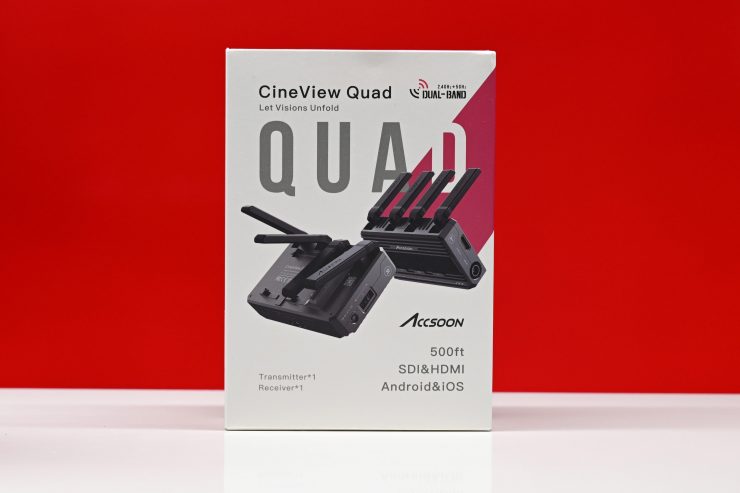
The CineView Quad comes with the following items:
- Accsoon CineView Quad Multi-Spectrum Wireless Video Transmission System
- CineView Quad Transmitter
- CineView Quad Receiver
- Shoe Mount
- Limited 1-Year Warranty
What it is and what it isn’t
The CineView Quad, like all of the 2.4GHz and 5GHz systems that are out there on the market, shouldn’t be compared with more expensive systems that send uncompressed video. All of these affordable options that don’t send uncompressed video are going to have some level of latency.
You need to be very aware that this is not intended to be a replacement for a close to zero latency system. Any wireless video system that utilizes 2.4GHz or 5GHz is compressing the image signal and you will always get some delay. I wouldn’t recommend any of these systems if you want to use them to pull focus off a transmitted image. That’s just my personal opinion, but others may well disagree.
The CineView Quad is much more suitable as an easy way of letting multiple people monitor images without needing to give everyone monitors or RX units.
Dual-Band Transmission
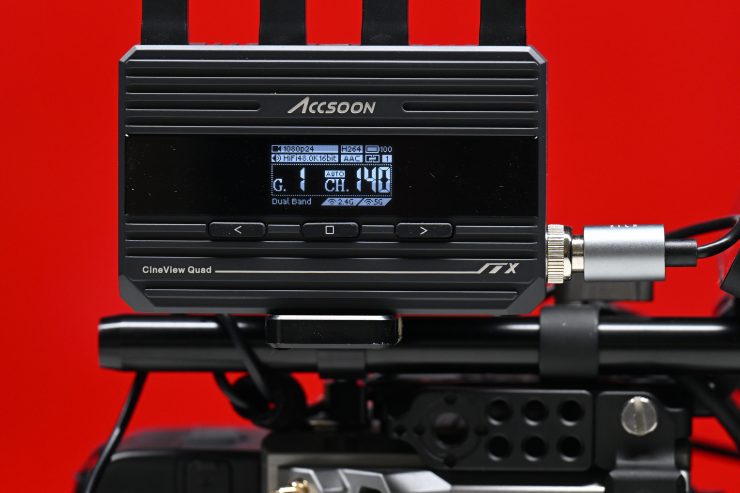
The CineView Quad utilizes dual-band transmission technology, which allows it to stream video via 2.4GHz and 5.8GHz Wi-Fi at the same time. The receiver can then intelligently identify interference and combine the two streams to form the complete audio and video stream. According to Accsoon, this greatly improves its stability and anti-interference capabilities.
The CineView Quad also features automatic channel selection. There are 20 channels to choose from and the transmitter will automatically scan the area and find the least congested channel to transmit on.
The CineView Quad not only transmits from the TX to the RX unit, but you can also use up to four receiving devices at the same time in any combination with the same CineView Quad transmitter. Another nice feature is that you can also connect your choice of CineView receivers and iOS/Android devices using the Accsoon Go app all at once. This allows multiple people to view images without having to give everyone a monitor and an RX unit.
The CineView Quad utilizes the AVC codec rather than HEVC, because many mobile devices can’t support HEVC.
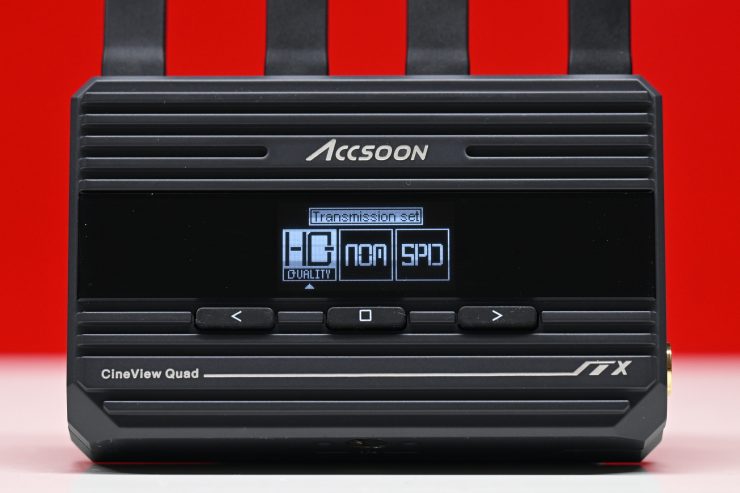
There is a Data Rate Setting that you can adjust on the TX unit. There are three different modes you can choose from:
- High-Quality Mode
- Normal Mode (default setting)
- Speed Mode
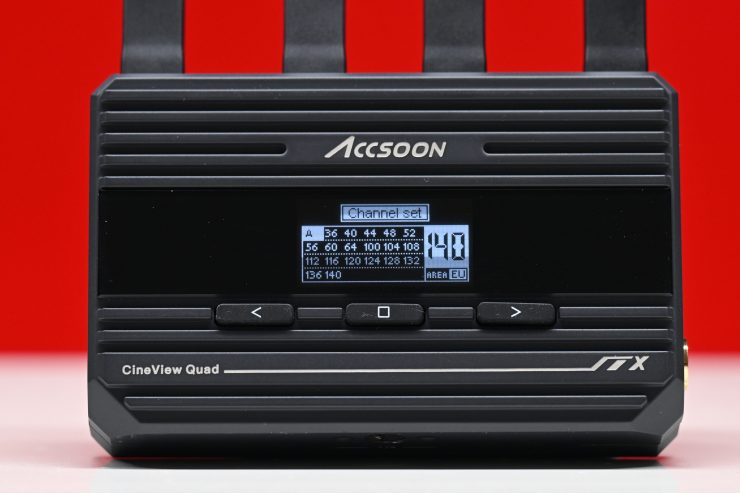
You can select from a range of different operating channels or just set the TX unit to Automatic channel selection.
Extended Range
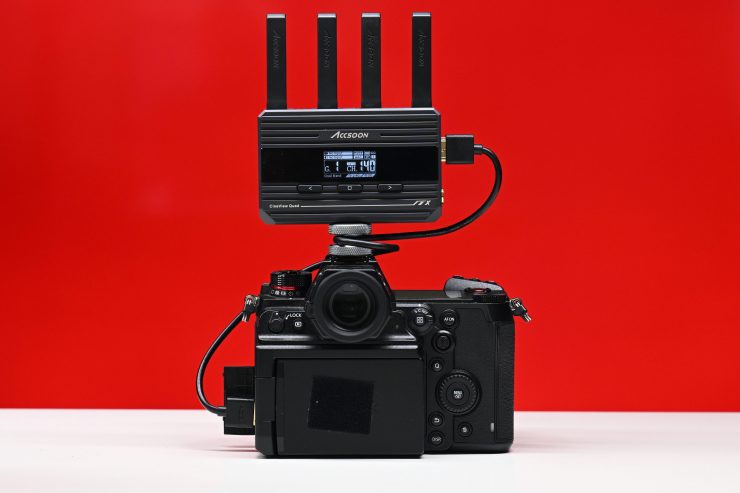
The CineView Quad has a claimed range of up to 500 feet (152.4m), which is an ok range for a Wi-Fi-based system.
Accsoon claims that the latency on the CineView Quad is <0.06 seconds (60ms). In reality, this latency is usually a lot higher than 60ms and you also need to factor in the HDMI delay from the camera you are using. Some cameras have worse latency than others. Even when using SDI you are still going to get some latency.
I will test both of these facets of the system further down in the review.
Operating Interface
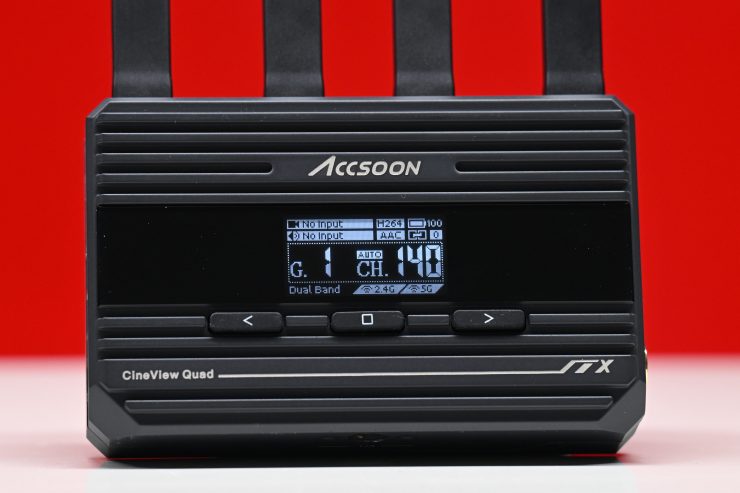
The screen on both the TX and RX units is nice and big and it lets you see key information clearly.
The boot-up time is reasonably slow for this device. It takes around 20 seconds from the time you turn on the TX unit until it comes up on the main screen.
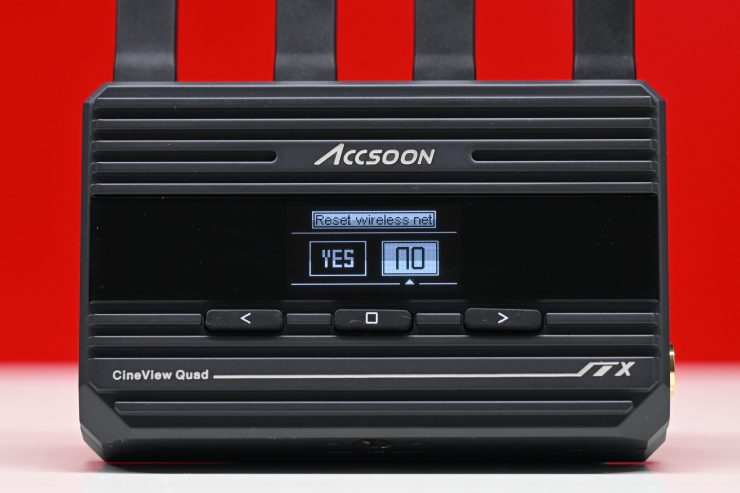
The menu system is very easy to navigate and making changes is straightforward.
SDI & HDMI
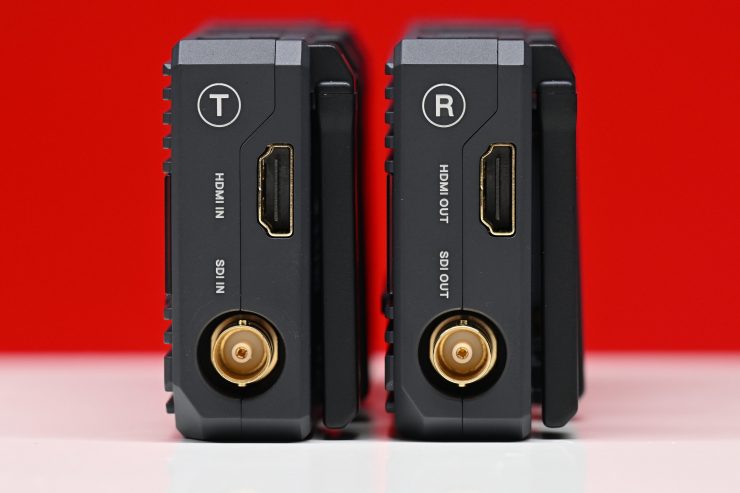
The CineView Quad has the ability to input either HDMI or SDI signals. This makes it very versatile and allows it to be used on just about any camera.
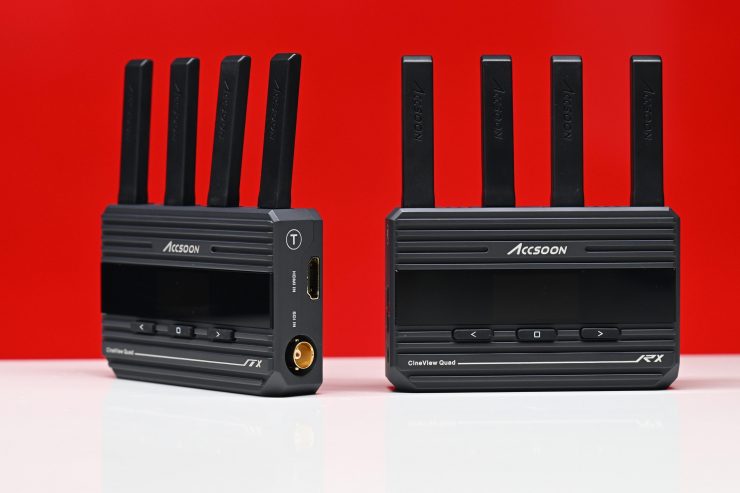
The CineView Quad TX has an HDMI input (full-sized) and an SDI input, and the RX unit has an HDMI out and an SDI out.
How is it powered?
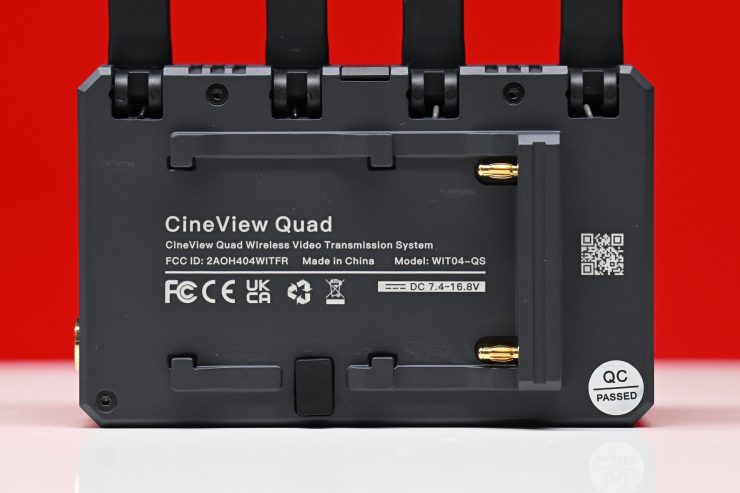
The CineView Quad needs to be powered via a single Sony NP battery. According to the company, a Sony NP-F970 battery can power the unit for up to 14 hours. I found the battery performance to be good.
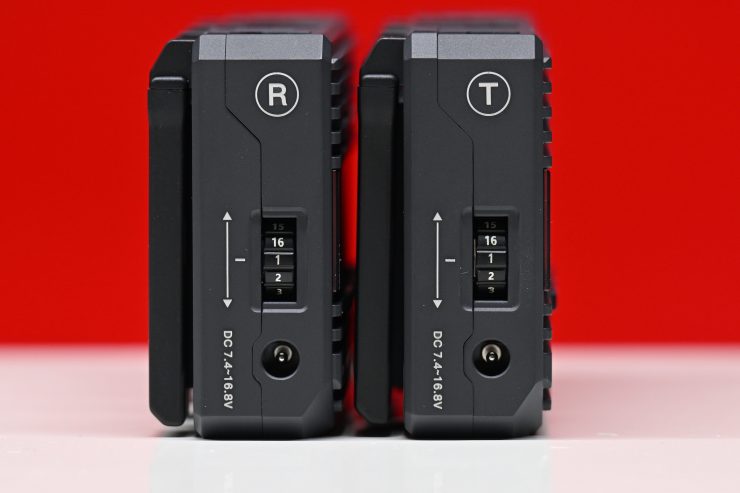
You can also choose to power the unit through the DC input (7.4V-16.8V) if need be. If you are inputting a 7.4V to 16.8V DC signal you can also run a battery and then hot swap that battery without the unit turning off.
iOS & Android App
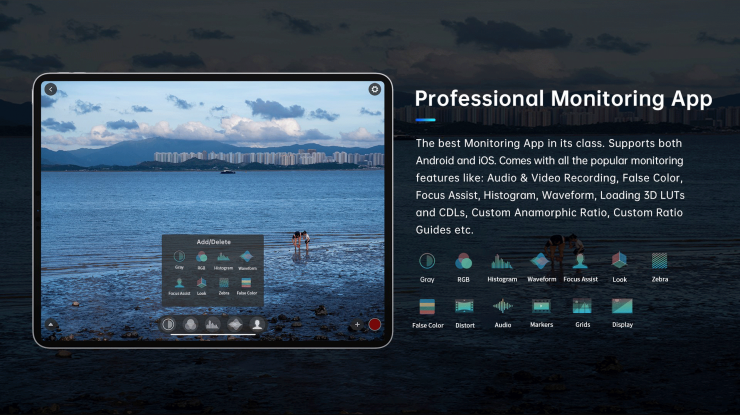
If you are streaming to an iOS or Android device, you can use the Accsoon App to monitor your wireless stream. The App features a lot of functionality and monitoring tools such as focus assist, waveform, false color, zebras, in-app audio and video recording, as well as the ability to load up your own 3D LUTs.
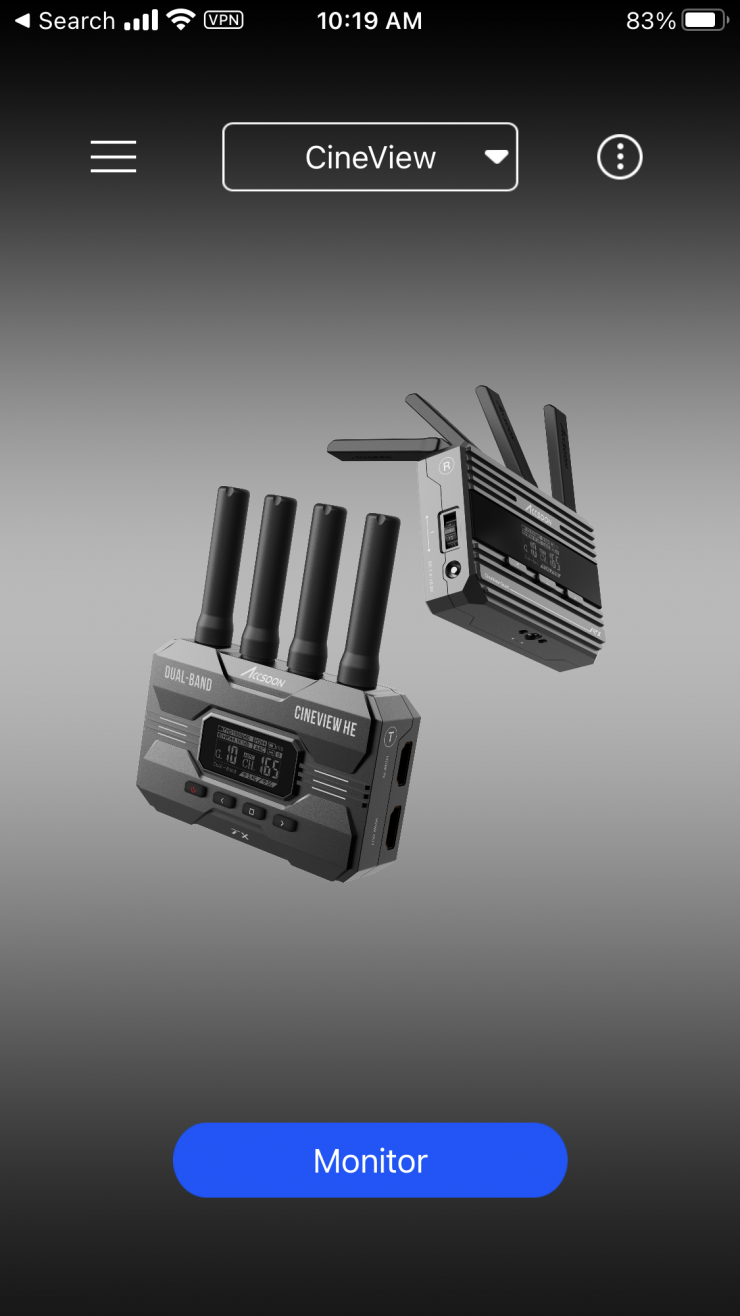
It is fairly easy to set up and get the app running. You just launch the app, turn on the TX unit (making sure it is receiving a signal from the camera) and join the Accsoon Wi-Fi network.
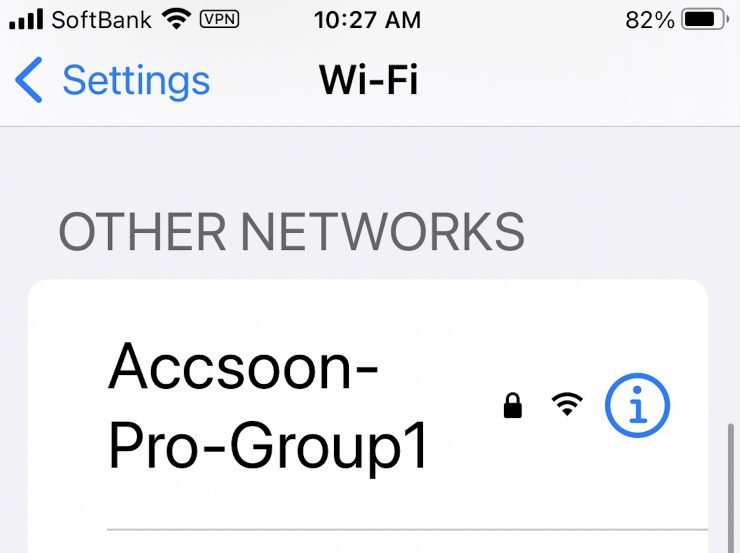
Now, joining the correct WiFi network is a little confusing because I found that the system was generating two different Wi-Fi networks and one of them was not the correct one. If I tried to join the other network it kept saying that the password was incorrect. Accsoon needs to address this and the name of the system needs to be clearly shown.
More on how it actually performs later on in the review.
Mounting Points
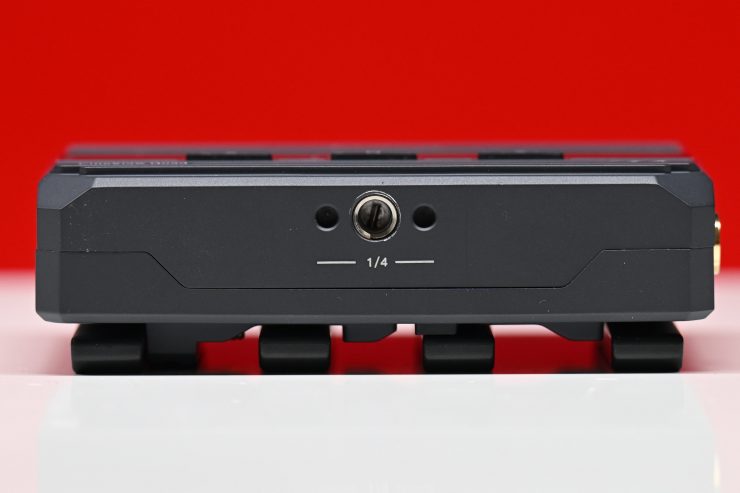
Accsoon only gives you a single 1/4 20″ mounting hole on both the TX and RX units. This is located on the bottom of the TX and RX units.

The system comes with two cold shoe to 1/4 20″ mounts. These are ok, however, because there is only a single mounting hole on the bottom of the TX and RX you end up having a system that is standing up very high on top of your camera.
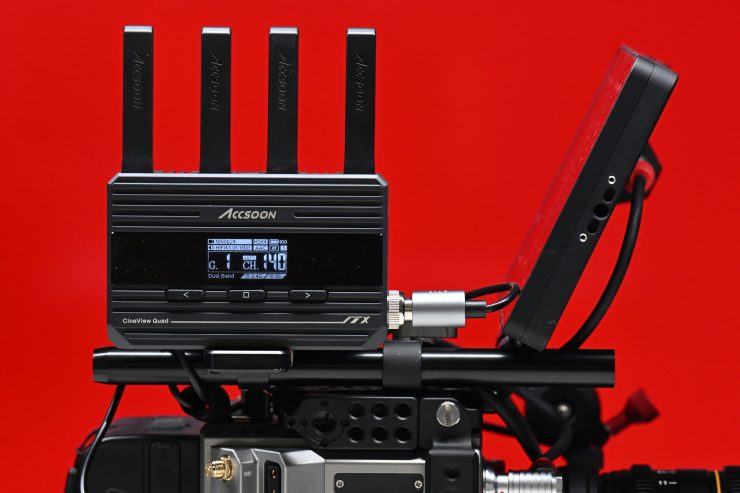
If you want to mount the TX or RX units in another position you would have to use a monitor arm or something similar.
Having large wireless units with only a single mounting point is far from ideal, but there isn’t a lot of available space to put another one somewhere else.
Accsoon Go App Usability
The app features some nice functionality, and it is certainly a lot better than most other competing products apps.
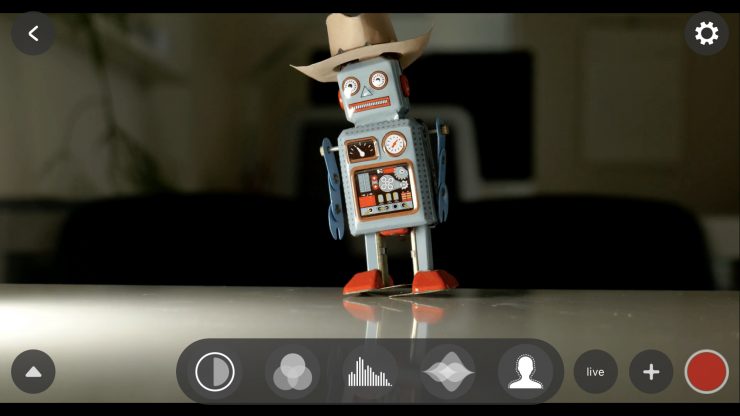
Here is what monitoring functions are available using the app:
- Gray
- RGB
- Histogram
- Waveform
- Focus Peaking
- Look
- Zebra
- False Color
- Markers
- Anamorphic de-squeeze
- Grids
- Display
- Audio
- LUTs
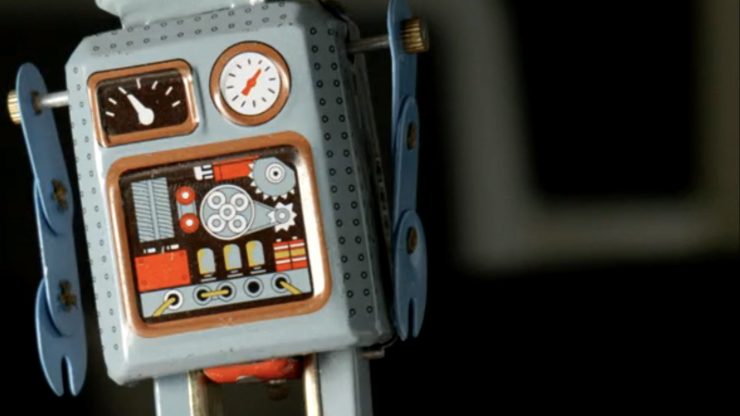
You can do focus magnification by pinch to zoom directly on the screen. While you can move around in the image when zoomed in I would have liked to have seen an indicator appear on the screen that lets you know that you are zoomed in.

You can also tap on the screen to remove the overlays to see just the image feed.
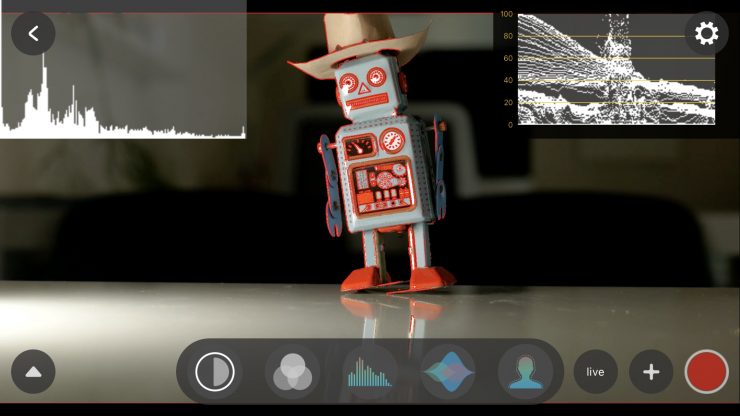
You can also have multiple view assist tools activated at the same time.
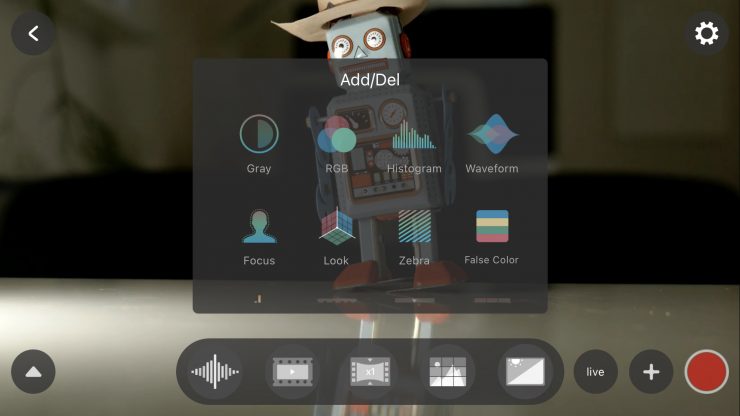
You can also choose what monitoring items you want to use. By selecting or deselecting these items you will only be able to see those items you have selected at the bottom of the screen. I do find it a little strange that the Add/Del section actually names the icons, but on the main screen they aren’t named. This does make choosing some of them a little confusing.
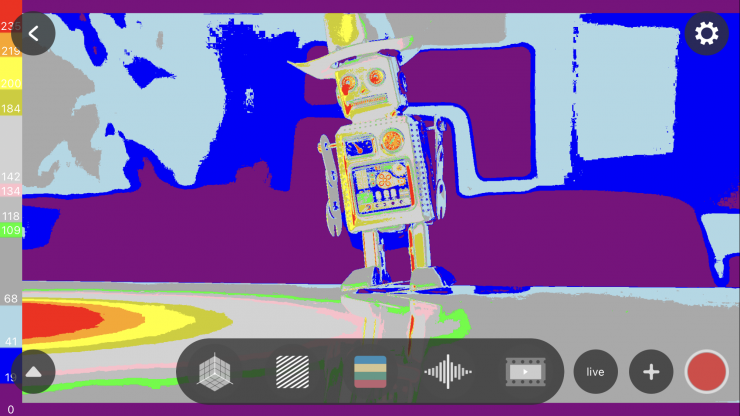
I like that Accsoon has actually listened to feedback and you can now see false color indicators and values for the waveform.
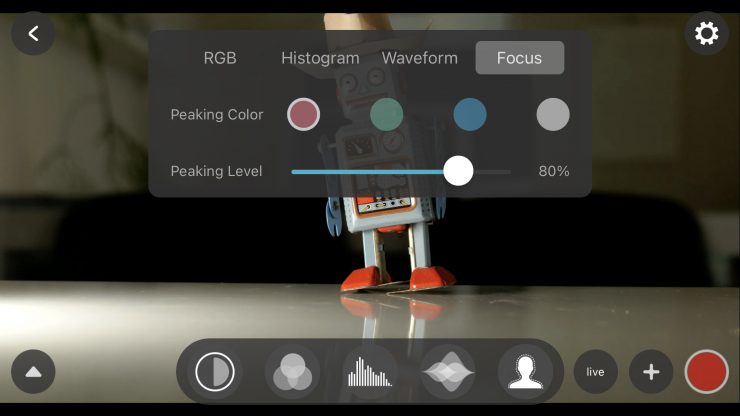
There is also peaking and zebras and you can change the intensity and color of the peaking, but only the intensity of the zebras. Strangely the zebras come up as a rep/purplish color.
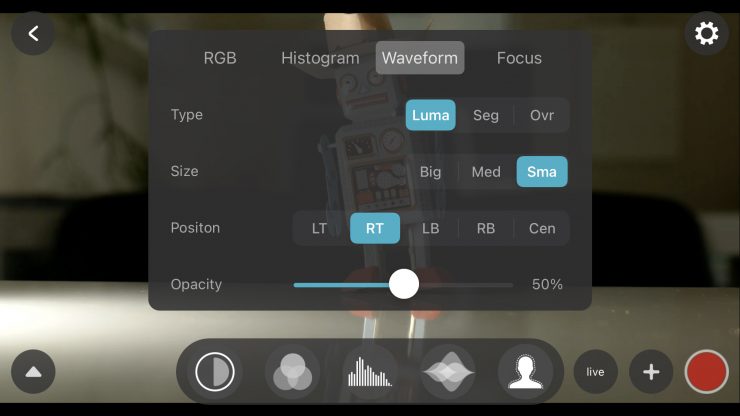
You can put multiple view assist tools up at the same time if you need to and Accssoon has improved the app so you can now change the size and positioning of items like the waveform and histogram.
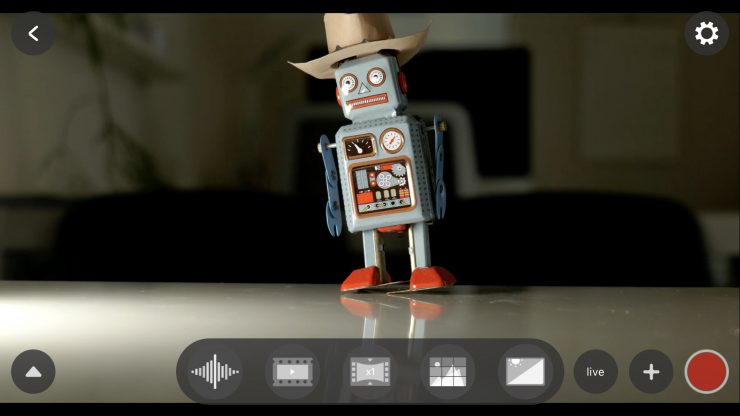
I like that you can actually record the video you are seeing directly on the phone. While this isn’t great quality it does allow you to view back clips and also to upload something to social media if need be. Unlike apps from other rival companies, you can also bring up any of the view assist tools while the phone is recording, as well as use the pinch to zoom functionality.
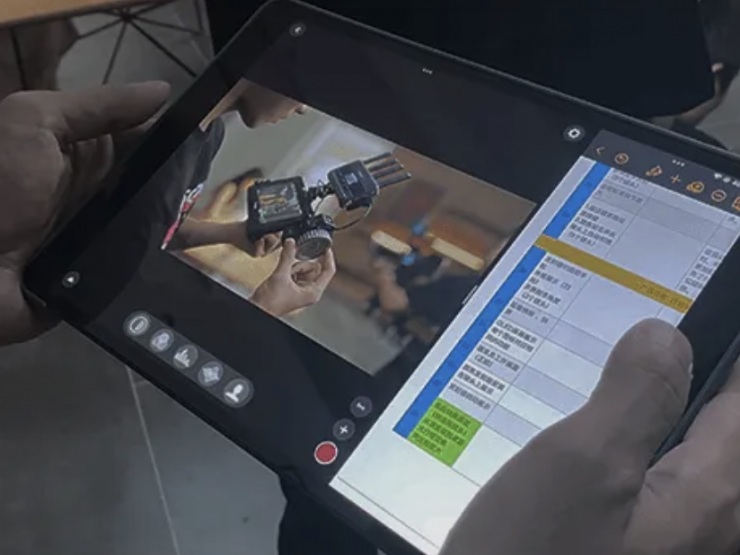
If you are using an iPad you can also utilize a Spilt Screen function. which is handy if a director or a producer wants to look at a script or notes at the same time.
The picture quality of the signal coming up on the app is pretty good. It will probably be good enough for most people who are buying a system such as this. In all honesty, it is one of the better-looking pictures I have seen from a wireless app-based system at this price.
Image Delay
Image delay can be a problem with HDMI-based devices, but it really depends on the camera you are using. Some cameras have horrible image delay over HDMI, while others are really good. Now, the CineView Quad has SDI as well, so in theory, you would assume the latency is going to be better. What you clearly need to remember is this is not a wireless video system that is capable of sending uncompressed, zero-latency images.
Accsoon claims their system has under 60ms of latency (camera latency not included), but they don’t specify anywhere whether that is when using HDMI or SDI, or when using the app. Companies selling compressed wireless video systems do not count any type of delay from what you are seeing on a camera’s screen. In the real world, latency is the latency you encounter over the whole system and not the latency from a TX unit to an RX unit. So let’s do some latency tests with the Accsoon.
SDI
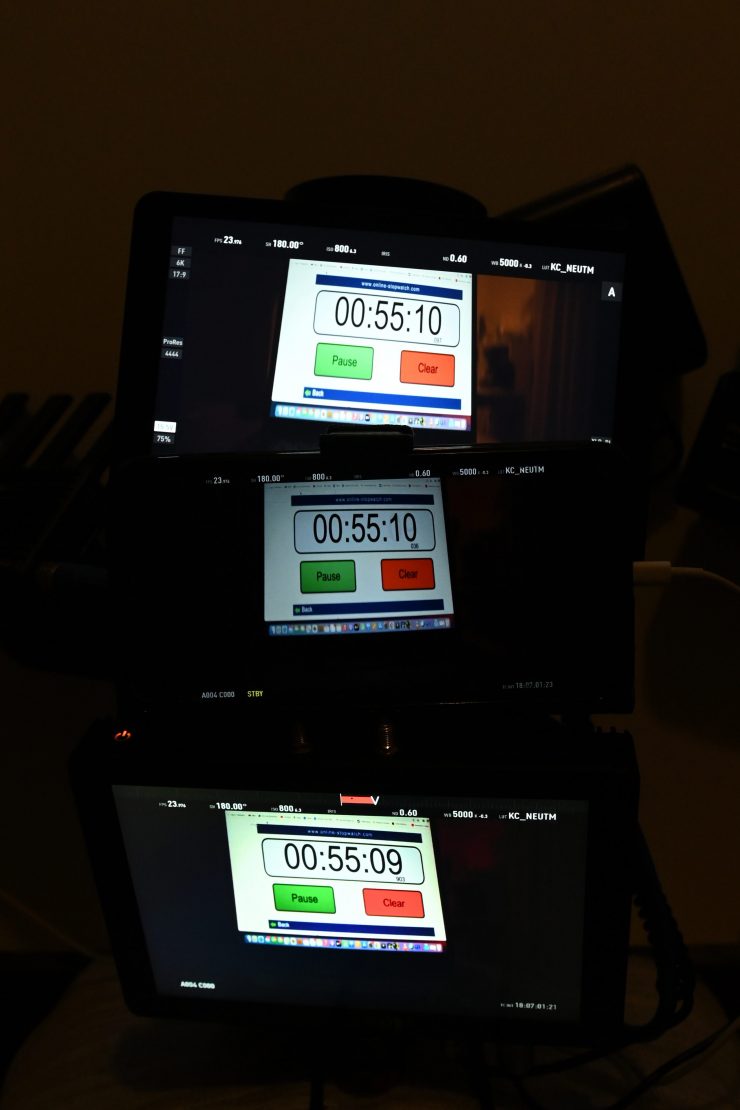
Ok, so let’s try using SDI first. I measured the delay average over a series of three tests at a whopping 181.66ms when viewing images on a monitor connected to the RX when the TX was set to Speed transmission. This was using a Kinefinity MAVO EDGE 6K.
What do these figures actually mean? Well, anything below 100ms is considered to be low, because most humans don’t perceive a delay that small. Once you get over 100ms we perceive a noticeable delay. 181.66ms was certainly not what I expected, but the tests don’t lie.
So what about if you use the Accsoon Go app? I measured the delay average over a series of three tests at 51.66ms with the TX set to Speed transmission. These results surprised me because the latency was actually way less when using the app than it was if you used the TX and RX units together. Yes, I know that the app should theoretically be a lot better when it comes to the latency, but the difference between the app and the output from the RX was massive.
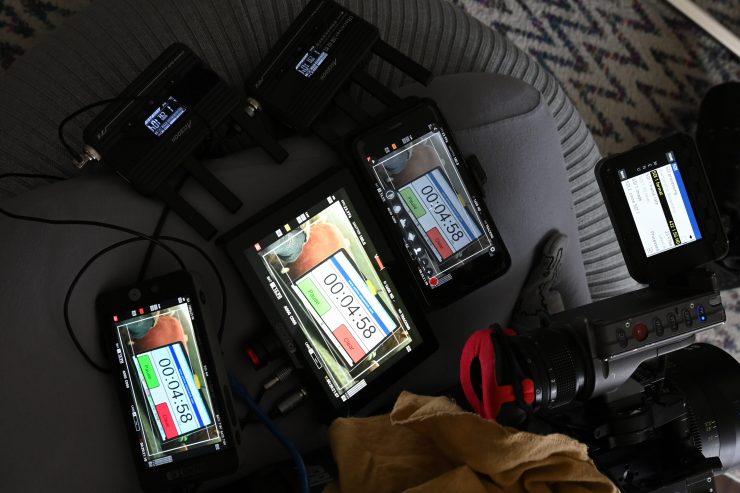
Now, I didn’t think that these results sounded right so I decided to do the test again with an ARRI Amira.
I measured the delay average over a series of three tests at 84.66ms when viewing images on a monitor connected to the RX when the TX was set to Speed transmission.
So what about if you use the Accsoon Go app? I measured the delay average over a series of three tests at an extremely low 17.66ms with the TX set to Speed transmission. This was an outstanding result for a system like this, however, the dealy over SDI when monitoring from the TX was still a little high for my liking.
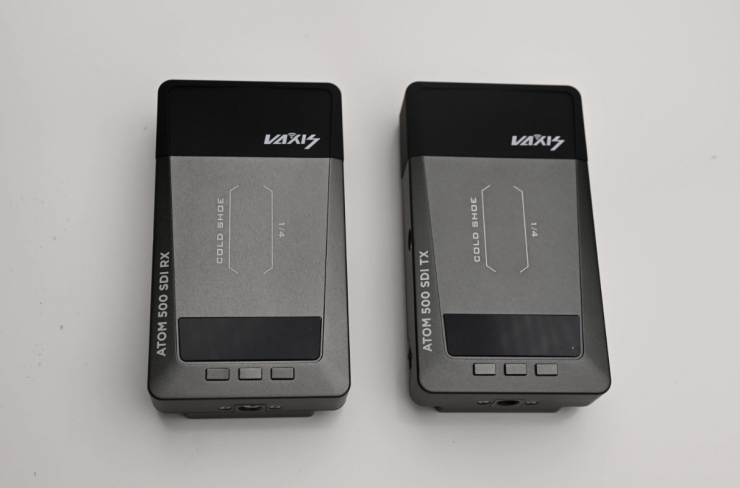
As a comparison, I did some latency tests using the Vaxis Atom 500 SDI and output an SDI signal from the camera to the Atom 500 TX. I then connected a monitor to the Atom 500 RX via SDI.
I measured the delay average over a series of three tests at 140ms. When sending an SDI signal to the TX unit and monitoring using the Vaxis Vision app the average delay was 71ms which was basically half the latency of when using the RX unit.
Above you can see what the delay looks like when you use the Speed Mode and SDI. You can see the delay from the camera screen, to the monitor connected to the RX, to what is being seen on the App. The output from the TX is on the bottom, the output from the RX is in the middle, and the app is on the top. As you can clearly see, the app latency is way less than that of the ouput from the RX unit.
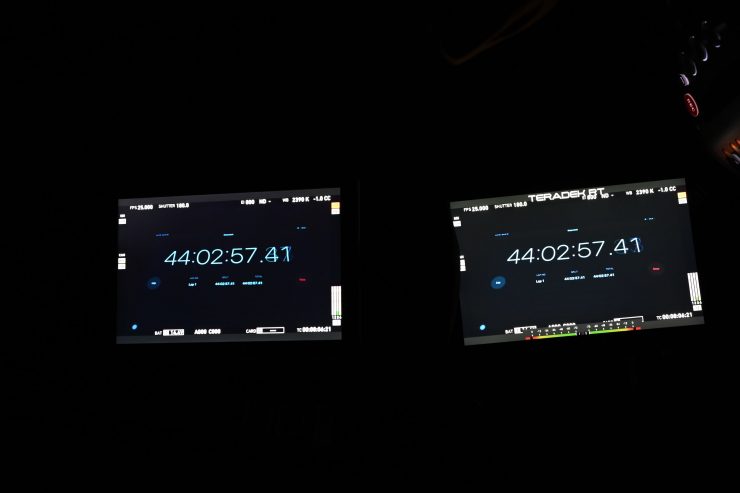
As a reference, above you can see that there is zero latency when using an expensive Teradek system (well, as close to zero as you can get. No wireless system is really zero in the scientific sense). This is a prime example of why you pay more money for a high-end wireless video system.
HDMI

So what is the delay like if we use a camera that only has an HDMI output like a mirrorless hybrid such as the Nikon Z9? I measured the latency over a series of 3 tests when viewing images on a monitor connected to the RX unit when the TX set to Speed transmission at 145ms.
I then measured the delay average over a series of three tests at 97ms when using the Accsoon Go app with the TX set to Speed transmission. These results were ok, but not great for a budget wireless video system. The latency on the Accsoon App was better than that of the monitor, however, neither result was particularly good.
What you clearly need to remember about any camera that uses HDMI is that the image delay will vary dramatically depending on what camera you are using.
Thoughts on image delay
When using SDI the results were worse than when using HDMI. You are not going to get the same sort of results as you will with an uncompressed, zero-latency system. At the end of the day, there needs to be an acceptable limit that you are willing to tolerate. I think when using an app people can forgive higher latency, but if you are using dedicated TX and RX units it really needs to be below 100ms. When I say below 100ms, that is for ‘affordable’ budget systems. For high-end systems, it should be almost zero.
In saying all of that, the latency of the Accsoon CineView Quad was low when sending an SDI signal to the TX unit and then viewing on the Accsoon App. Could you use it to pull focus remotely? Possibly, but if that is your main intent you would still be better off with a zero-latency uncompressed system.
For the price of this system and its capabilities, the image delay was a bit hit and miss unless you are outputting over SDI to the TX unit and monitoring using the app.
If your sole reason for having a wireless video system is just so that someone can see an image then the latency is not a big deal. If, however, someone needs to pull focus remotely, any latency does make doing that a lot harder. You don’t want the person pulling focus seeing an image with any noticeable dealy.
Real-world performance
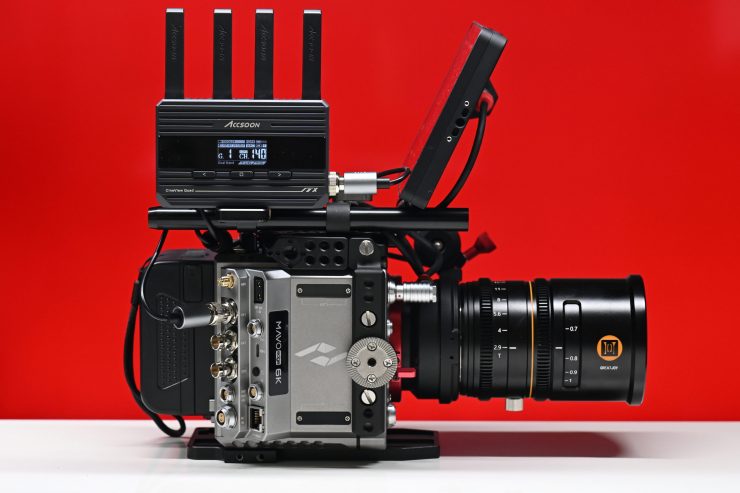
How does the CineView Quad actually perform in the real world?
The real transmission distance is also relevant to the current air electromagnetic environment, because the system works in the ISM band, and therefore has exposure to all kinds of 5GHz band air interference.
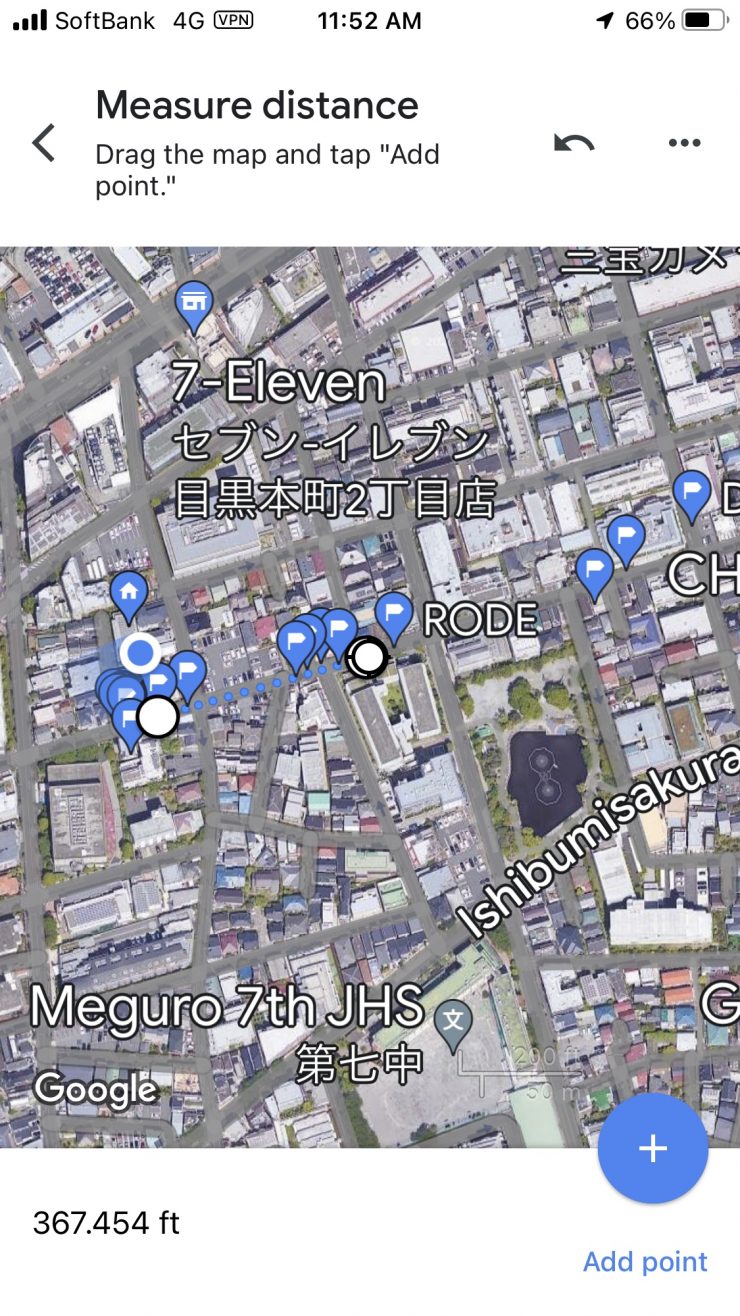
With this in mind, I decided to test the range and performance of the system. To test the range of the system I remained in line of sight of the receiver and started walking away with the TX attached to the camera. I found that I could get 111.86m (367′) and still have a stable signal. You can get slightly more distance, but there was too much breakup and the signal was no longer stable. Also, if something gets in between the RX and the TX you will get breakup and you can lose the signal. The nice thing is if you do lose the signal it comes back once you are back in range without you having to do anything.
Now, Accsoon claims a maximum operating range of 500 feet (152.4m) line-of-site, but that is only going to be achievable on flat, open terrain where there is little wireless interference. I did this test in the middle of Tokyo which is one of the most heavily congested RF and WiFi traffic areas on the planet. In this particular test, the CineView Quad wasn’t able to reach its claimed operating distance in this environment.
What you should clearly remember is that the distance you can achieve will vary greatly depending on where you are and how you are using the system.
When it comes to monitoring using the Accsoon Go App, I could receive a signal at the same distance as when using the RX.
As a comparison, I also tested the Vaxis Atom 500 SDI.
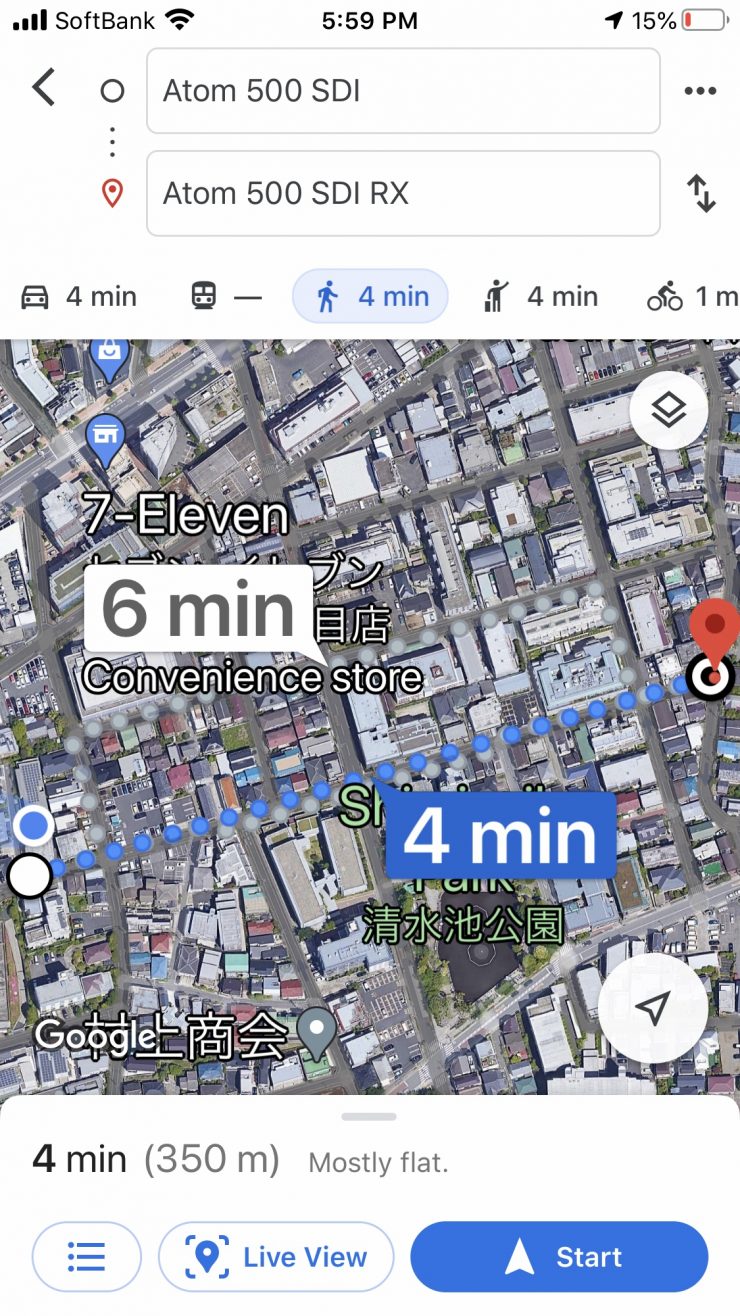
I found that I could easily get 350m (1148′) and still have a stable signal. I’m sure I could have gotten even more distance, but I ran out of straight road where I was doing the test.
Now, Vaxis claims a maximum operating range of 500′ (152m) line-of-site, but this is usually only going to be achievable on flat, open terrain where there is little wireless interference. I did this test in the middle of Tokyo which is one of the most heavily congested RF and WiFi traffic areas on the planet. I didn’t expect the Atom 500 SDI to reach anywhere near its claimed operating distance in this environment, but it exceeded it by a large margin.
I really can’t explain why or how, but the test didn’t lie. What you should clearly remember is that the distance you can achieve will vary greatly depending on where you are and how you are using the system.
The only logical explanation I can come up with is that the automatic channel selection system must be working really well.
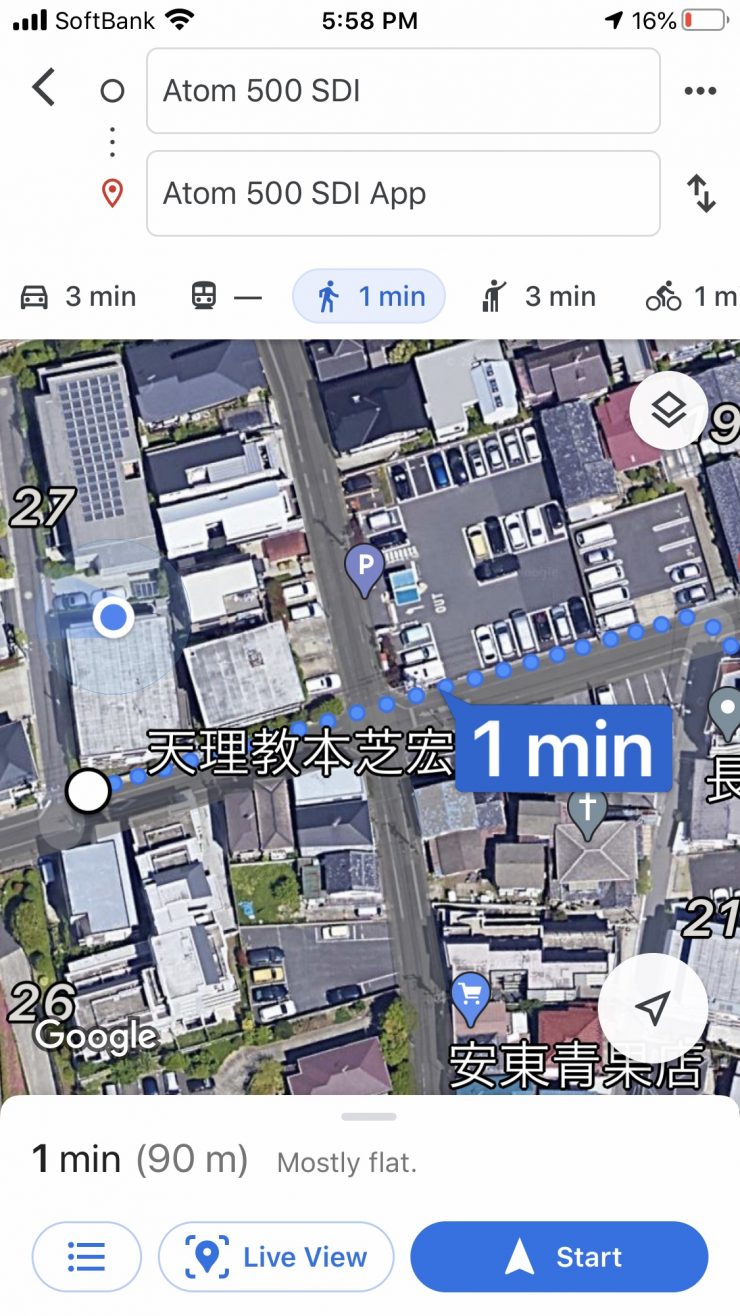
When I was using the Vaxis Vision App I found I could get around 90m (295′) maximum distance. In saying that, the app signal is never really that stable once you start getting around 40-50m away from the TX. I was constantly seeing the picture disappear and then reappear.
Whenever I review wireless video transmitters I do the test in the exact same place under the same operating conditions. This way I get a good idea of how various competing systems compare.
I also found that the automatic channel functionality worked really well. I would take the Atom 500 SDI into a different environment and I noticed that on occasion it would change the channel automatically.
Ok, so now back to the CineView Quad.
The dual-band transmission technology really works well and the CineView Quad is a good option if you need multiple people to monitor video using smartphones or tablets over distances.
I also wanted to do some other tests with the system as well. I was interested to see what would happen if the system lost connection, so I turned the receiver off and then back on again. This would be common practice if you were swapping over a battery. It took around 12 seconds for the receiver to re-establish a connection which was reasonably good.
Next, I turned the transmitter off, which is more commonly what may happen when you change over a camera battery or power the camera off and then on again. This time it took around 24 seconds to get a picture back up on the monitor that was connected to the RX unit.
What about if I pulled out the SDI cable from the camera? This time the system re-established the connection in around 4 seconds.
So what would happen if I suddenly changed the frame rate to 50p on my camera while the system was on? It only took around 5 seconds for the signal to come back.
The system is pretty straight forward and easy to use and it connects back up reasonably quickly without any issues. This means it passes my wireless frustration test.
Whenever I review wireless video transmitters I do the test in the exact same place under the same operating conditions. This way I get a good idea of how various competing systems compare.
Price & Availability
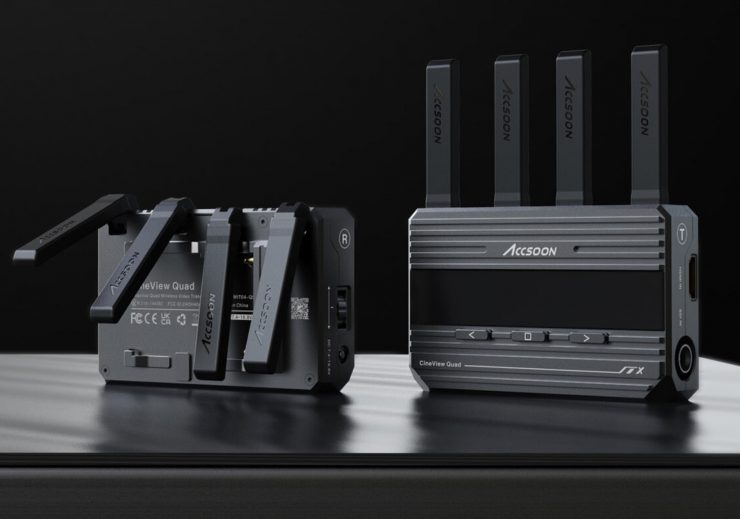
The CineView Quad TX/RX combined kit retails for $529 USD and it is now available to purchase.
You can also buy it from Amazon at the below links.
US: https://www.amazon.com/dp/B0B3CRYL9W?ref=myi_title_dp
CA: https://www.amazon.ca/Accsoon-CineView-Multi-Spectrum-Transmission-Live-Streaming/dp/B0B3CRYL9W
How does this price compare to other wireless video systems with SDI that can also stream to an app?
Please note all of the above systems offer different features and functionality.
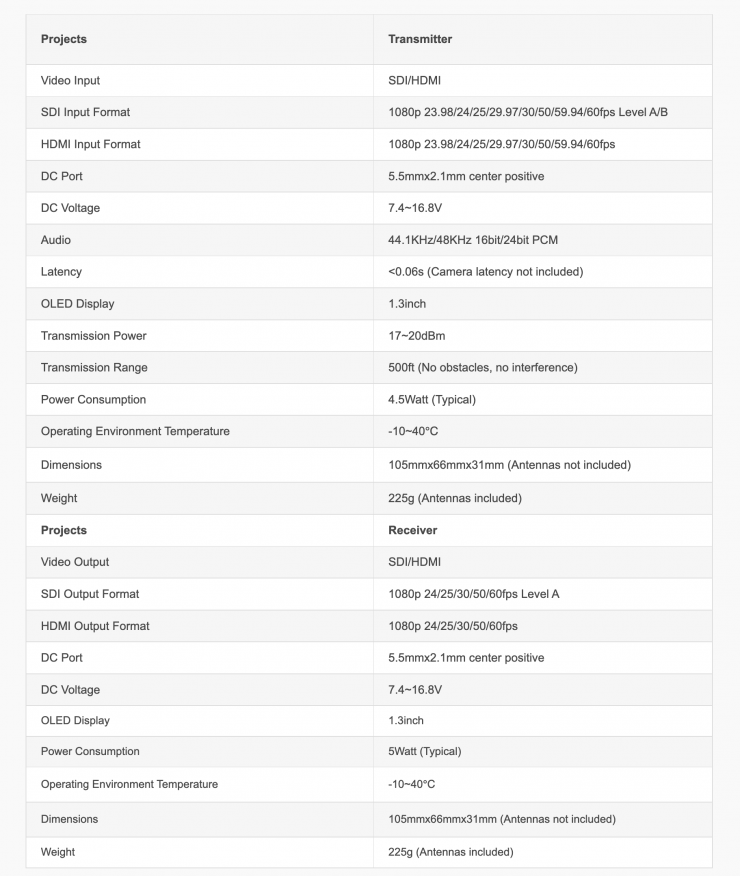
Competition
Surprisingly, there aren’t actually many products out there that are in direct competition with the Accsoon CineView Quad.
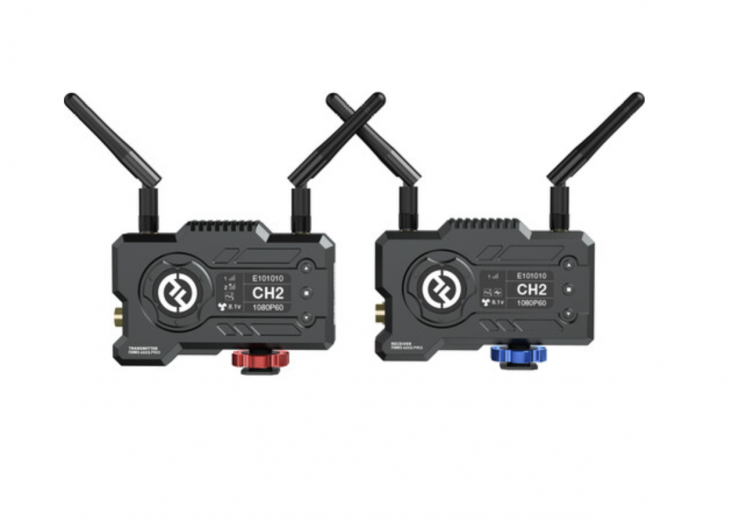
Hollyland has the Mars 400S Pro. This system has HDMI and SDI inputs on the transmitter, and the receiver offers SDI and HDMI outputs. It features a claimed low 0.08s latency with line-of-sight transmission up to 400′ to the receiver and up to 300′ to the Hollyview Wi-Fi app.
Using the Hollyview app for iOS or Android, you can monitor your video transmission in real-time via a Wi-Fi connection as well as live stream directly from the receiver via your computer using a USB Type-C adapter.
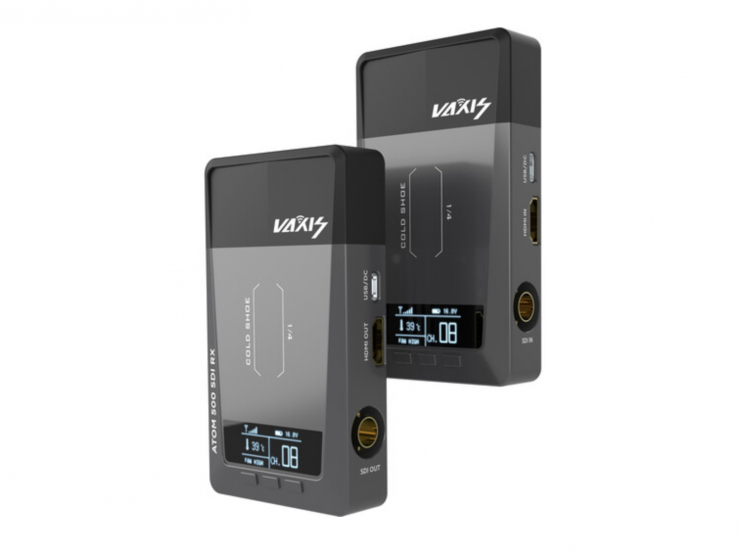
Vaxis sells the ATOM 500 SDI. The transmitter features one 3G-SDI and one HDMI input while the receiver has one 3G-SDI and one HDMI output. The ATOM 500 SDI is claimed to be able to transmit visually lossless, H.265 video signals to the Vaxis receiver with less than 80 ms latency. The system has a range of up to 500′ (line-of-sight) and it can also multicast via Wi-Fi to up to three mobile devices for monitoring.
They can be powered using its USB Type-C connector with the included cable or by using a separately available L-series battery. The USB input can also be used to upgrade the firmware.
Conclusion
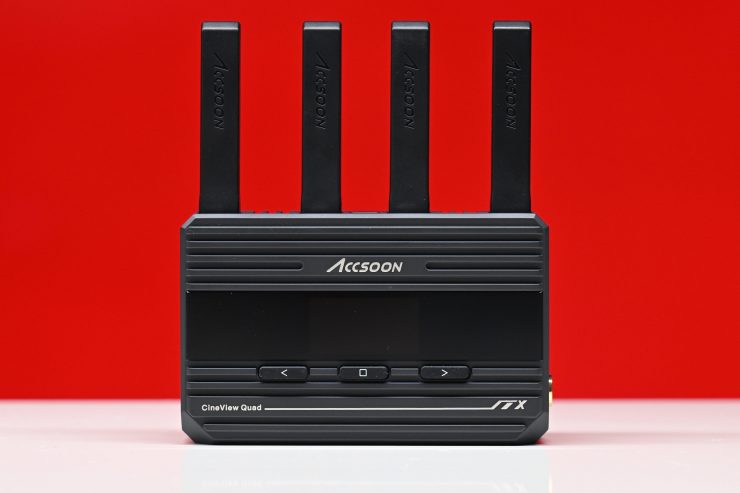
A wireless video transmission system needs to have rock-solid reliability. It also has to not get in your way and be easy to set up and use. Look, I get it, this is a cost-effective wireless system, it is not supposed to perform like a dedicated high-end professional wireless system. In saying that, it still needs to be reliable and easy to use.
The Accsoon CineView Quad is well built, easy to set up and use, and has a decent operating range. The app is a lot better than what its competitors offer. The boot-up time is a bit slow and you need to be aware of that. However, in saying that, most wireless systems don’t have particularly fast start-up times.
As far as image delay goes it is pretty good. You need to clearly know that this system is not going to provide you with latency-free images. The results you are going to get will depend greatly on the camera you are using and whether you are using HDMI or SDI.
In saying all of this, if you are talking about any app-based wireless streaming, they are all going to have some sort of image delay. However, the Accsoon has the lowest latency of any of these types of systems I have tested.
I like what Accsoon has done, and the CineView Quad features a lot of functionality and performance for the price. The image delay is minimal, the quality of the image on the app is good, and the ability to stream directly to YouTube is a nice additional feature. It does, however, face stiff competition from systems produced by both Hollyland and Vaxis.
Like what we do and want to support Newsshooter? Consider becoming a Patreon supporter and help us to continue being the best source of news and reviews for professional tools for the independent filmmaker.

